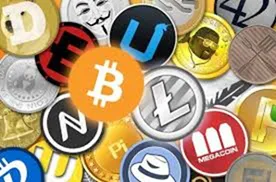The rise of cryptocurrencies is creating some confusion in the terminology used to refer to these currencies. Sometimes this type of currency is called cryptocurrencies, other times virtual currency and sometimes digital money. However, the three terms are not interchangeable.
This is leading to quite serious confusion as when a medium said that the Bank of England was preparing a cryptocurrency, when in reality it is a virtual currency.
Digital Money: it's practically everything

Digital money is, in general, any means of monetary exchange made by electronic means. When a money transfer is made from one bank account to another, digital money is being used, or also when paying with a card at a store.
That is, when a payment or sending of money is made without physically exchanging coins or bills, digital money is being used. Virtually all the money in the world is digital, since cash only represents approximately 8% of the money in circulation.
Therefore, when someone refers to digital money, they should be talking simply about money. The money of the day to day is digital. The vast majority of wage earners in the world charge and pay in digital money. Digital money is money.
Virtual Currency: there are some

Now, sometimes we talk about virtual currency. Virtual money is money that only exists in its digital format. For example, in many video games there is internally a currency with which you can buy objects. This money that is used within the game is virtual.
There may also be virtual money that is not the protagonist of a videogame, for example, a currency created by companies or fans that intended to substitute the current physical money for a new currency away from the control of central banks. An example could be E-gold, which ended up closing due to legal problems.
By definition, virtual currencies are all digital. As they do not physically exist, there is no paper money of them, they have to be 100% digital. Therefore, all virtual currencies are digital, but not all digital currencies are virtual (an example is a bank account in euros, it is digital but not virtual).
Cryptocurrencies: a subgroup of the above

The first attempts to integrate cryptography with electronic money were made by David Chaum, through DigiCash and ecash, which used cryptography to anonymously return money transactions, albeit with a centralized payment issuance and settlement.
The concept or idea of cryptocurrency was first described by Wei Dai, in 1998, where he proposed the idea of creating a new type of decentralized money that used cryptography as a means of control, while the first cryptocurrency that was created was Bitcoin, created in 2009 by the pseudonymous developer Satoshi Nakamoto, which uses the SHA-2 cryptographic function set (exactly SHA-256) as its PoW scheme (work proof). Subsequently, other cryptocurrencies have appeared, such as Namecoin (an attempt to decentralize the DNS domain name system, which would make internet censorship very difficult), Litecoin (which uses scrypt as a PoW scheme, as well as, to have a faster transaction confirmation), Peercoin (which uses a PoW / PoS hybrid scheme [labor test / participation test], also has an inflation rate of around 1%) and Freicoin (which implemented the concept of Silvio Gesell adding depreciation over time). Many other cryptocurrencies have been created, although not all have been successful, especially those that have not brought any innovation.
In almost 8 years of existence, cryptocurrencies have been gradually gaining the attention of the general public and the media. Since 2011, interest has increased rapidly, especially during the vertiginous rise of Bitcoin, in April 2013.
On the other hand, digital and virtual money has been with us for decades, but cryptocurrencies are more recent. The cryptocurrencies, such as Bitcoin, DeepOnion, Ethereum and others, are a type of virtual currency that do not have a specific issuer, which are protected by cryptography and that in principle their coherence can be protected by a massive and distributed user verification of their users.
Therefore, cryptocurrencies are virtual and digital money. But unlike other virtual currencies, they do not have a centralized control, but are distributed and based on cryptography to avoid the manipulation of their members.
It can be concluded that all cryptocurrencies are virtual currency and digital money, but not vice versa. When you talk about digital money you can talk about world currency, and when you talk about virtual currency it may not be a cryptocurrency, but a currency with a specific issuer. We hope that the terms are used correctly in the future and there are no misunderstandings.